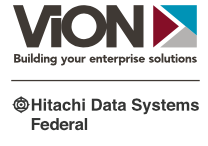It’s a bird. It’s a plane. No, it’s cloud.
Cloud has been a buzzword in the technology world for a while now. So, what is cloud? Simply put, cloud is a style of computing that can scale IT-related capabilities as a service, and it’s used in many places today, including the government.
Though it’s become popular in government, there are still challenges to incorporating cloud into infrastructures and existing systems. Agencies will face all types of hurdles such as decreases in budget, data control or unequipped skills when trying to make cloud a strategic business asset.
These hurdles can hinder your business plan, but there are solutions to successfully adopting cloud into your agency. In GovLoop’s recent online training, Cloud as a Financial Model, we heard from Michael Fischetti, Executive Director at National Contract Management Association, and David Stump, Product Sales Specialist at ViON Corporation. They explained how to overcome these hurdles and how to use cloud solutions effectively.
It starts at the beginning – with the contract. “Service Level Agreements (SLA) must clearly define performance and how performance is measured,” stated Fischetti. To create a good contract, you need to understand all the rules and regulations and find out your requirements. By taking the extra precautions in the beginning you will be able avoid any legal or compliance issues. Cloud computing contracts are new ground for contract and project mangers. “The process needs to be as standardized as possible and with a good team and a good contract, you can have a good model,” Fischetti said.
So, you have the contract with all your requirements and performance measurements. What’s next? Challenges will arise. “One constant in the world is change,” said Stump. That means constant technological updates and challenges.
These challenges can range from data sovereignty, control data, cost of data migration or staffing, to a lack of necessary skill sets in your employees. So how can cloud be beneficial to you even with these challenges? Cloud solutions as-a-Service can streamline costs because operational expenses will pay for usage. “Your agency will be able to digest new technology that much quicker with cloud,” said Stump.
Last but not least, communication is important to implement cloud into your strategic business plan. “Be upfront throughout the process; all of the parties need to keep communicating during each step,” advised Fischetti.
There are challenges to be faced when adopting cloud, but when you start off strong with a good backbone, embrace your challenges, and work on better communication, you can make cloud a strategic business asset.






Leave a Reply
You must be logged in to post a comment.